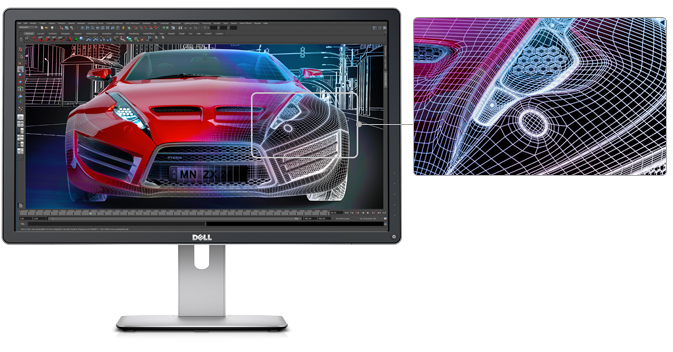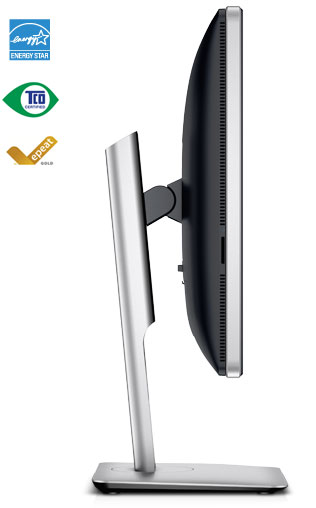domingo, 22 de dezembro de 2013
sexta-feira, 20 de dezembro de 2013
Clash of the terabyte titans: Crucial M500 960GB vs. Samsung 840 EVO 1TB
I feel a little silly saying this, but the Crucial M500 960GB and Samsung 840 EVO 1TB are two of the best values in the SSD market. Both drives sell for north of $500, which puts them firmly in high-end territory. However, they also have loads of storage. If you do the math, these terabyte flagships actually cost less per gigabyte than lower-capacity models with cheaper price tags. And they have higher performance ratings, too.
Considering the manufacturers, we probably shouldn't be surprised that these drives are such relative bargains. Samsung is the largest producer of flash memory in the world, while Crucial is the consumer brand ...
quarta-feira, 18 de dezembro de 2013
1000Mbps over copper telephone lines: ITU begins work on G.fast, successor to DSL

The ITU has begun the process of approving G.fast, a new standard that will allow for access speeds of 1-gigabit-per-second (Gbps) over copper telephone wires. G.fast (full name ITU-T G.9701) is expected to be a cheaper and easier-to-deploy alternative than FTTH and FTTC (fiber to the home and cabinet). G.fast is the technology that will finally bring super-fast broadband speeds to the masses who are stuck with copper wires for the dreaded last mile.
terça-feira, 17 de dezembro de 2013
quarta-feira, 11 de dezembro de 2013
Samsung Unveils 1TB mSATA Solid-State Drives with High Performance
Samsung Reveals 840 Evo mSATA SSDs with Large Capacities and High Performance
domingo, 8 de dezembro de 2013
Intel SSD Roadmap Points To 2TB Drives Arriving In 2014
URL: http://rss.slashdot.org/~r/Slashdot/slashdot/~3/A9Mnue7MdUo/story01.htm
MojoKid writes "A leaked Intel roadmap for solid state storage technology suggests the company is pushing ahead with its plans to introduce new high-end drives based on cutting-edge NAND flash. It's significant for Intel to be adopting 20nm NAND in its highest-end data center products, because of the challenges smaller NAND nodes present in terms of data retention and reliability. Intel introduced 20nm NAND lower in the product stack over a year ago, but apparently has waited till now to bring 20nm to the highest end. Reportedly, next year, Intel will debut three new drive families — the SSD Pro 2500 Series (codenamed Temple Star), the DC P3500 Series (Pleasantdale) and the DC P3700 Series (Fultondale). The Temple Star family uses the M.2 and M.25 form factors, which are meant to replace the older mSATA form factor for ultrabooks and tablets. The M.2 standard allows more space on PCBs for actual NAND storage and can interface with PCIe, SATA, and USB 3.0-attached storage in the same design. The new high-end enterprise drives, meanwhile, will hit 2TB (up from 800GB), ship in 2.5" and add-in card form factors, and offer vastly improved performance. The current DC S3700 series offers 500MBps writes and 460MBps reads. The DC P3700 will increase this to 2800MBps read and 1700MBps writes. The primary difference between the DC P3500 and DC P3700 families appears to be that the P3700 family will use Intel's High Endurance Technology (HET) MLC, while the DC P3500 family sticks with traditional MLC."
Read more of this story at Slashdot.
domingo, 1 de dezembro de 2013
Dell Leaks Details of a 24” UHD 4K (3840x2160) Monitor, the UP2414Q
Currently there are several 4K options on the market – models using the higher end IGZO displays such as the Dell Ultrasharp 32” 4K (UP3214Q, $3500) or the ASUS PQ321Q ($3500, our review) are currently attracting the most attention. From my perspective (and a few others), 32” is just too large for a desktop monitor and while 4K seems attractive, something smaller (27”) would be more palatable. In comes Dell, who has leaked through their Belize website, the next generation 24” UHD Monitor, the UP2414Q. (Interesting enough it is also mentioned on their US website, through the compatibility list of a sound bar.)
Putting arguments aside about OS scaling and whether someone needs 4K in a 24 inch monitor, the specifications do make for interesting reading:
- 3840 x 2160 in 24 inches = 183.58 pixels per inch, compared to 204 for the IBM T220/T221 and 137.6 for a 32” UHD
- 178º/178º Viewing Angle
- 99% AdobeRGB and 100% sRGB (G-B LED backlight we assume)
- Factory Calibrated to Delta-E < 2
- 10-bit, 1.07 billion colors
- HDMI, DisplayPort, mini-DP, four USB 3.0 and 6-in-1 card reader
Of course, information is limited. Other reports online list this as an IPS panel, although that is ultimately unverifiable at this point in time - we can only speculate that a 24" high end panel is finally making its way through the chain. The 32” UP3214Q from Dell is only 30Hz at full resolution unless you use DisplayPort 1.2a + MST (Chris is testing this monitor as I type), so one might assume that the 24” panel would be the same.
Price and release date not announced – given that the 32” models are around $3500, the offset of a smaller cut of panel against the increased difficulty in creating it might be the competing factors here.
quarta-feira, 13 de novembro de 2013
domingo, 3 de novembro de 2013
Gigabyte Z87 Haswell Motherboard Round-Up
URL: http://hothardware.com/Reviews/Gigabyte-Z87-Motherboard-Roundup-Z87XUD4H-G1Sniper-5-Z87XOC-Force/
quarta-feira, 23 de outubro de 2013
4K 12-inch tablets are going to be a thing and Japan Display can prove it
URL: http://www.engadget.com/2013/10/23/japan-display-4k-tablet-lcd/?ncid=rss_truncated
 If the iPad mini's new Retina Display didn't quite hit the spot, maybe 4K tablet displays from Japan Display will. Panasonic's already managed to slather its hulking 20-inch tablet in the same resolution, which was a feat in itself. But let's consider something a little more handheld friendly -- ...
If the iPad mini's new Retina Display didn't quite hit the spot, maybe 4K tablet displays from Japan Display will. Panasonic's already managed to slather its hulking 20-inch tablet in the same resolution, which was a feat in itself. But let's consider something a little more handheld friendly -- ...
quarta-feira, 25 de setembro de 2013
Recommended Power Supplies
URL: http://www.silentpcreview.com/Recommended_PSUs
Our short list of recommended power supplies for quiet or silent computers. Last update: 25 September 2013.
quarta-feira, 28 de agosto de 2013
MSI Z87I Review: Mini-ITX Haswell for $140
URL: http://www.anandtech.com/show/7244/msi-z87i-review-miniitx-haswell-for-140
I am always excited when a mini-ITX motherboard bound for the mainstream market crosses my desk. In a small PCB, compared to full sized ATX, it can be difficult to have a feature filled product that stands up to scrutiny. Today we have the Z87I under the hammer, MSI’s small solution to Z87 Haswell.
segunda-feira, 12 de agosto de 2013
segunda-feira, 5 de agosto de 2013
Diablo’s Memory Channel Storage tech will deliver terabytes of RAM – using NAND flash

A new memory technology designed to put NAND flash directly in DRAM channels has been making waves this week. We go behind the scenes and investigate the underlying technology.
sábado, 3 de agosto de 2013
segunda-feira, 29 de julho de 2013
Why YouTube buffers: The secret deals that make—and break—online video

Lee Hutchinson has a problem. My fellow Ars writer is a man who loves to watch YouTube videos—mostly space rocket launches and gun demonstrations, I assume—but he never knows when his home Internet service will let him do so.
"For at least the past year, I've suffered from ridiculously awful YouTube speeds," Hutchinson tells me. "Ads load quickly—there's never anything wrong with the ads!—but during peak times, HD videos have been almost universally unwatchable. I've found myself having to reduce the quality down to 480p and sometimes even down to 240p to watch things without buffering. More recently, videos would start to play and buffer without issue, then simply stop buffering at some point between a third and two-thirds in. When the playhead hit the end of the buffer—which might be at 1:30 of a six-minute video—the video would hang for several seconds, then simply end. The video's total time would change from six minutes to 1:30 minutes and I'd be presented with the standard 'related videos' view that you see when a video is over."
Hutchinson, a Houston resident who pays Comcast for 16Mbps business-class cable, is far from alone. As one Ars reader recently complained, "YouTube is almost unusable on my [Verizon] FiOS connection during peak hours." Another reader responded, "To be fair, it's unusable with almost any ISP." Hutchinson's YouTube playback has actually gotten better in recent weeks. But complaints about streaming video services—notably YouTube and Netflix—are repeated again and again in articles and support forums across the Internet.
Read 85 remaining paragraphs | Comments
sábado, 27 de julho de 2013
terça-feira, 23 de julho de 2013
TV 4K Ultra HD ainda engatinha, mas a Globo já pensa em 8K
De acordo com diretor de engenharia de entretenimento da TV Globo, a tecnologia 8K seria a evolução natural da radiodifusão

Attached media file [image/jpeg] (72486 bytes)
Attached media file [image/jpeg] (72486 bytes)
segunda-feira, 22 de julho de 2013
Intel DH87RL Haswell H87
URL: http://feedproxy.google.com/~r/Phoronix/~3/lN9tgwFVsoQ/vr.php
For those Linux desktop users in the market for a micro-ATX motherboard for use with the latest-generation Haswell processors, the Intel DH87RL motherboard costs a little more than $100 USD and gets along mostly well with modern Linux distributions.
quinta-feira, 18 de julho de 2013
Seagate Readies 5TB, 6TB Enterprise-Class Hard Disk Drives
Seagate's Enterprise Hard Disk Drives Roadmap Revealed
domingo, 14 de julho de 2013
HP Keeps Installing Secret Backdoors In Enterprise Storage
URL: http://rss.slashdot.org/~r/Slashdot/slashdot/~3/QJdNVZWg1KE/story01.htm
Nerval's Lobster writes "For the second time in a month, Hewlett-Packard has been forced to admit it built secret backdoors into its enterprise storage products. The admission, in a security bulletin posted July 9, confirms reports from the blogger Technion, who flagged the security issue in HP's StoreOnce systems in June, before finding more backdoors in other HP storage and SAN products. The most recent statement from HP, following another warning from Technion, admitted that 'all HP StoreVirtual Storage systems are equipped with a mechanism that allows HP support to access the underlying operating system if permission and access is provided by the customer.' While HP describes the backdoors as being usable only with permission of the customer, that restriction is part of HP's own customer-service rules—not a limitation built in to limit use of backdoors. The entry points consist of a hidden administrator account with root access to StoreVirtual systems and software, and a separate copy of the LeftHand OS, the software that runs HP's StoreVirtual and HP P4000 products. Even with root access, the secret admin account does not give support techs or hackers access to data stored on the HP machines, according to the company. But it does provide enough access and control over the hardware in a storage cluster to reboot specific nodes, which would 'cripple the cluster,' according to information provided to The Register by an unnamed source. The account also provides access to a factory-reset control that would allow intruders to destroy much of the data and configurations of a network of HP storage products. And it's not hard to find: 'Open up your favourite SSH client, key in the IP of an HP D2D unit. Enter in yourself the username HPSupport, and the password which has a SHA1 of 78a7ecf065324604540ad3c41c3bb8fe1d084c50. Say hello to an administrative account you didn't know existed,' according to Technion, who claims to have attempted to notify HP for weeks with no result before deciding to go public."
Read more of this story at Slashdot.
quinta-feira, 27 de junho de 2013
Intel Z87 Motherboard Review with Haswell: Gigabyte, MSI, ASRock and ASUS
Talk about Haswell and Z87 has circulated the internet for many quarters – today we reap the benefits of the wait and get our chance to review both the CPU and several examples of the Z87 chipset. Today we have in the Gigabyte Z87X-UD3H, the MSI Z87A-GD65 Gaming, the ASRock Z87 Extreme6/AC and the ASUS Z87-Pro.
System Builder Marathon, Q2 2013: System Value Compared
URL: http://www.tomshardware.com/reviews/mini-itx-build-it-yourself-overclocking,3510.html#xtor=RSS-182
 Our top three builders struggled to fit big performance into three tiny ITX-based platforms at three budget levels. Will the more expensive machines once again justify their higher prices through dramatically-improved performance? Read on for more.
Our top three builders struggled to fit big performance into three tiny ITX-based platforms at three budget levels. Will the more expensive machines once again justify their higher prices through dramatically-improved performance? Read on for more.
sábado, 15 de junho de 2013
Noctua Demonstrates World's First CPU Cooler with Active Noise Cancelling Technology
Noctua and RotoSub to Launch Cooler with Noise Cancelling Technology in Mid-2014
sábado, 8 de junho de 2013
10GbE: What the Heck Took So Long?
URL: http://rss.slashdot.org/~r/Slashdot/slashdot/~3/3m9AY24O6-s/story01.htm
storagedude writes "10 Gigabit Ethernet may finally be catching on, some six years later than many predicted. So why did it take so long? Henry Newman offers a few reasons: 10GbE and PCIe 2 were a very promising combination when they appeared in 2007, but the Great Recession hit soon after and IT departments were dumping hardware rather than buying more. The final missing piece is finally arriving: 10GbE support on motherboards. 'What 10 GbE needs to become a commodity is exactly what 1 GbE got and what Fibre Channel failed to get: support on every motherboard,' writes Newman. 'The current landscape looks promising. 10 GbE is starting to appear on motherboards from every major server vendor, and I suspect that in just a few years, we'll start to see it on home PC boards, with the price dropping from the double digits to single digits, and then even down to cents.'"
Read more of this story at Slashdot.







